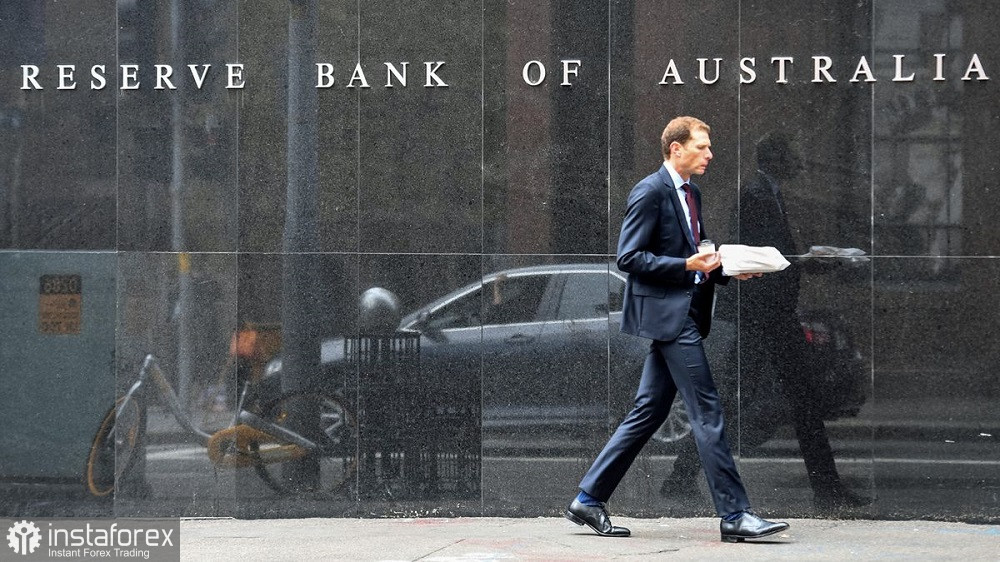The AUD/USD pair tried to approach the 0.66 figure on Tuesday, but the bullish momentum faded around the resistance level of 0.6590 (upper Bollinger Bands line on the daily chart). On Wednesday, the bears took the initiative, riding the wave of the US dollar's broad strength. However, it is not yet time to talk about a trend reversal: the fundamental backdrop for the US dollar remains bleak, while there are "glimmers of hope" for the Australian dollar.
The minutes of the Reserve Bank of Australia's November meeting did the aussie a favor, as did the comments from RBA Governor Michelle Bullock, who voiced rather hawkish views. Traders still anticipate another interest rate hike by the RBA at one of the upcoming meetings, while the chances of a Federal Reserve rate hike fluctuate between 0 and 5%. The greenback will not benefit from this outlook. Therefore, the US dollar's current strength should be treated with caution, as well as the sale of AUD/USD.

But let's return to the minutes of the RBA's November meeting. The key idea of the document is the Bank's readiness for further steps to tighten monetary policy. At least one such step, and quite soon, is expected at one of the upcoming meetings.
The RBA acknowledged that inflation expectations could significantly increase if the interest rate is not further raised. The central bank emphasizes the extreme importance of not allowing even a slight rise in inflation expectations. At the same time, it is noted that the need for further tightening of monetary policy will depend on incoming data and risk assessments.
What does this mean? First and foremost, it signifies the readiness for additional tightening of monetary policy. This is the main conclusion. The second conclusion stems from the first – the hawkish decision on the rate will depend on the dynamics of inflation.
To remind you, the RBA raised the interest rate at the last meeting in response to third-quarter results, which reflected an increase in the Consumer Price Index. In quarterly terms, the CPI rose to 1.2% after growing by 0.8% in the second quarter, with a forecasted increase of 1.1%. On an annual basis, the index decreased to 5.4% with a forecasted decline to 5.2%. On a monthly basis, the index also reflected concerning trends: it rose to 5.6% in September, while most experts expected to see it at 5.3%. Moreover, the indicator has been rising for the second consecutive month, contrary to forecasts of a decline.
Data for the fourth quarter will only be published in January, and the first meeting of 2024 will be in February. It can be assumed that the RBA will make a rate decision based on quarterly data, i.e., not at the upcoming meeting but at the one in February. However, it should be noted that exactly a week later (November 29), inflation growth data for October will be released in Australia, and the last RBA meeting of the year will take place on December 5. If the October figures are in the "green zone" (meaning inflation accelerates again on a monthly basis), hawkish expectations regarding the RBA's further course of actions will significantly increase in the market. The probability of another rate hike in December will rise, and this will provide substantial support for the aussie.
Bullock does not rule out the implementation of a hawkish scenario. During her speech on Tuesday, she said that more significant tightening of monetary policy "is the right response to inflation." Bullock acknowledged that the inflation issue is becoming increasingly domestic (demand-driven), stating that prices are rising "actively" for most goods and services. In this context, she noted that the RBA has "always had a low tolerance for inflation."
Thus, the minutes and Bullock's recent statements indicate a hawkish stance. The information backdrop contributes to further growth in the AUD/USD price, as the greenback is still under pressure from recent events. The latest macroeconomic reports are also not in favor of the U.S. currency. For instance, existing-home sales in the U.S. tumbled 4.1% last month to a seasonally adjusted annual rate of 3.79 million units, and new orders for manufactured durable goods plummeted by 5.4% month-over-month in October 2023 (excluding transportation, the indicator remained at zero).
However, the greenback's main problem is waning hawkish expectations regarding the Fed's future course of actions.
All of this suggests that short positions on the AUD/USD pair are very unreliable. In this situation, it would be better to adopt a wait-and-see position or consider long options with the main target at 0.6590 (the Kijun-sen line on the weekly timeframe).
 English
English 
 Русский
Русский Bahasa Indonesia
Bahasa Indonesia Bahasa Malay
Bahasa Malay ไทย
ไทย Español
Español Deutsch
Deutsch Български
Български Français
Français Tiếng Việt
Tiếng Việt 中文
中文 বাংলা
বাংলা हिन्दी
हिन्दी Čeština
Čeština Українська
Українська Română
Română

